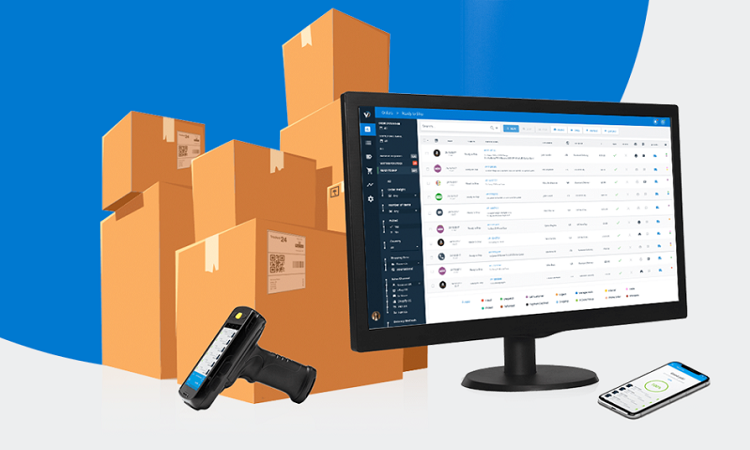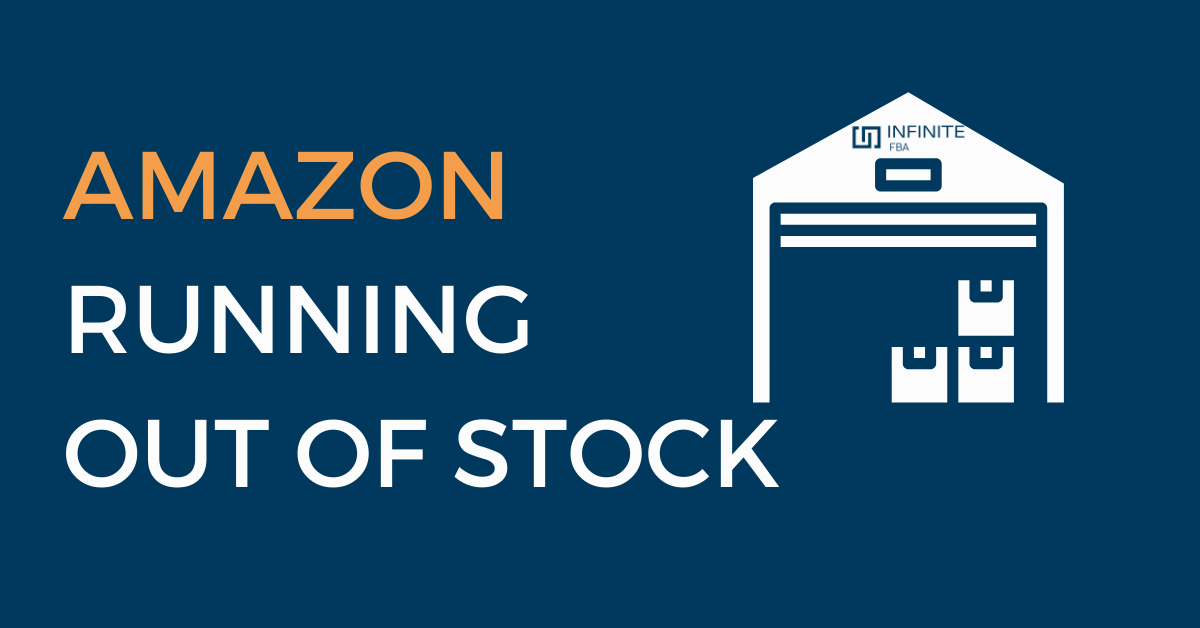Having an amazing product on Amazon is a good thing as long as you don’t sell out. Amazon wants you to have a popular product that sells well while keeping up with the demand.
Running out of stock on Amazon can hurt your listings and affect your future selves. Most people have been there where customers demand a product that seems inexplicably hot, but you cannot fulfill it because it is out of stock.
The dissatisfied customer will click off your listing and buy the product from another brand. If more customers realize you can’t fulfill the demand, they will head over to your competitor, who will soon become the better business.
And it can be a long-term detrimental effect on your success on Amazon. This article discusses Amazon’s running out of stock, the effects, and how to avoid this pitfall.
How Does Running Out of Stock Affect Your Business

Running out of stock means orders exceeding inventory account and safety stock are too low to utilize and fulfill all the orders.
It happens when you run out of an inventory of a particular item, which can happen anywhere in the supply chain.
These stock-outs can affect your business down the road if you don’t have the tools to cut them.
Loss of revenue
The most obvious consequence of stock-outs is lost revenue. If a customer doesn’t find their desired products from your shop, they may opt to buy from another brand resulting in lost revenue.
You are always the profit of that sale and experience other less recurring sales in the future.
Running out of stock can affect your Amazon listing. When you go out of stock, Amazon automatically removes your listing, marking it inactive.
An inactive listing means you don’t make sales because customers won’t order an item that’s being restocked.
You will no longer appear as a seller on the listing. If you were operating only as a seller, the listing would disappear completely.
You will upset your customers
Shoppers feel let down when you don’t have what they’re looking for, and the last thing you want is to disappoint your customers. When you run out of stock, you’ll have to tell a customer that you don’t have a product they just purchased.
The consequence of upsetting your customers is that they go to a competitor who has the product and lose trust in your business. Your poor customer experience will benefit someone else.
You will lose sales and a competitive edge
You’ll also lose to your competitors when you run out of stock since their products can take your place in the Amazon search engine. Customers who don’t get what they want from you will go to your competitors.
Most customers shop with another brand if they experience a stock-out and post negative reviews about your brand to hurt your reputation. Instead, you lose your potential customers to your competitor listings.
You will jeopardize your product sales rank and visibility
Due to being out of stock, an inactive listing means you don’t show up in search listings. Your competitors will continue to make more sales as they appear in search results.
Your rankings will suffer once your listing is reactivated because you’ll need time to get back to the top of the search results. Hence, you will lose the momentum you paid to build through running out of stock.
How to Prevent Running Out of Stock
Stock-outs happen when a specific item or product is unavailable when the customer is ready to buy. They result from miscounting inventory and ending with fewer stocks than you thought you had.
Supplier delay and lack of cash to buy inventory can also cause stock-outs. Usually, stock-outs happen due to supply chain issues of inventory management.
Luckily, you can avoid an Amazon stock-out as long as you have a solid inventory management strategy.
You can prevent many causes of running out of stock by taking steps to understand your business and products.
Know your sales data

There are high chances you have a busy season or two throughout the year. For example, you could make most of your sales in the spring and summer if you sell grilling tools.
As a seller, knowing your sales data is the first step to avoid running out of stock. It doesn’t matter when your busiest sales season is. Know when and plan accordingly by bulking up on inventory.
Make a habit of tracking your sales data to prevent running out of stock. If you are a seasoned business owner, look at your sales trends to understand your high sales velocity months over the last year.
On Amazon, look up the sales history for a product you want to sell to have a general sense of high-demand days.
Inaccurate data is one reason you run out of stock. When dealing with inventory, you can easily run into inaccuracies where the inventory numbers on paper don’t match what they have in the stores.
These discrepancies can lead to merchants thinking they have an item in stock when they don’t, thus reordering the wrong products or quantities.
You can easily obtain the number of orders placed on each sales channel, which allows you to track your product’s popularity over time.
The information on your sales data can provide insights into when to reorder certain items. You can review your sales data from the previous shopping season and note your best sellers.
Calculate your metrics and plan properly
Data is important when planning your sales, computing reorder levels, and stocking well for another season. Calculate safety stock to avoid running out of stock.
Yourself to stock levels can help you use financial service in the most effective way possible. If you don’t maintain adequate safety stock levels, you may miss out on sales if demand increases.
Calculating your metrics can ensure you’re always prepared even during unforeseen increases in sales. Focus on calculating the safety stock levels you will need to meet customer orders.
Safety stock with the additional stock of products involved in case of an increase in product demand or supply chain failure. It allows you to create a cushion in the stock levels, and then you are sure you don’t run out of product.
In calculating the metrics, look at the busiest time of the year and whether holidays affect the production timeline. This information is important if you order products from overseas and navigate holidays.
Successful companies take all measures to predict future sales, forecast inventory and demand, and then manage accordingly.
Use inventory management tools

Inadequate forecasting and reporting can cause stock-outs and inventory shortages. Running out of stock can be inevitable if you’re managing your inventory yourself because it’s overwhelming and prone to human error.
Investing in inventory management software can help avoid stock-outs. Use the tools to forecast your inventory over any selected period. Many automated stock management systems are available to track inventory and order items based on your guidelines.
Using inventory management tools can help you avoid discrepancies by ensuring your corrections run more smoothly. An effective inventory management tool will tell you how much to order, when to replenish your fba inventory number, and where your shipments are at all times.
You can use the inventory management tool to record inventory, fulfill orders, and enter information into your inventory management system.
Be in contact with your supplier
Stock replenishment involves ensuring you always have enough products you sell at the right time. However, this can be a problem if you don’t maintain a healthy relationship with your supplier. Sometimes stock-outs happen in the audio control because the supply has inventory issues.
Avoid running out of stock is by managing supplier relationships. Make sure you understand the production cycle of your supplier as they understand your sales cycle. Don’t be blindsided by a delay on your supplier’s end.
Managing supplier relationships entails negotiating better terms with your suppliers to guarantee a minimum order each month. Negotiate better terms with your supplier if you guarantee more or larger orders.
You can also consider having backup suppliers to ensure a steady supply of inventory and avoid stock-outs. You will risk running out of stock if you rely on one supplier to meet higher demand.
Work with suppliers who provide enough stock to avoid running out of this product. If they can’t guarantee consistent supply, work with an extra supplier as a backup.
Conclusion
Running out of stock is one of the worst nightmares for retailers. Not only do they lead to lost sales, out of stocks causes reduced customer satisfaction and lower loyalty levels.
There are reasons for stock-outs, including poor inventory management, inaccurate inventory count, and poor forecasting processes. Fortunately, you can easily circumvent this situation.
Investing in an inventory management tool, knowing your data, and maintaining a great relationship with your supplier can keep your operations running and your customers happy.
Consider using an online inventory management tool regardless of how you plan to manage or avoid an Amazon stock-out.





